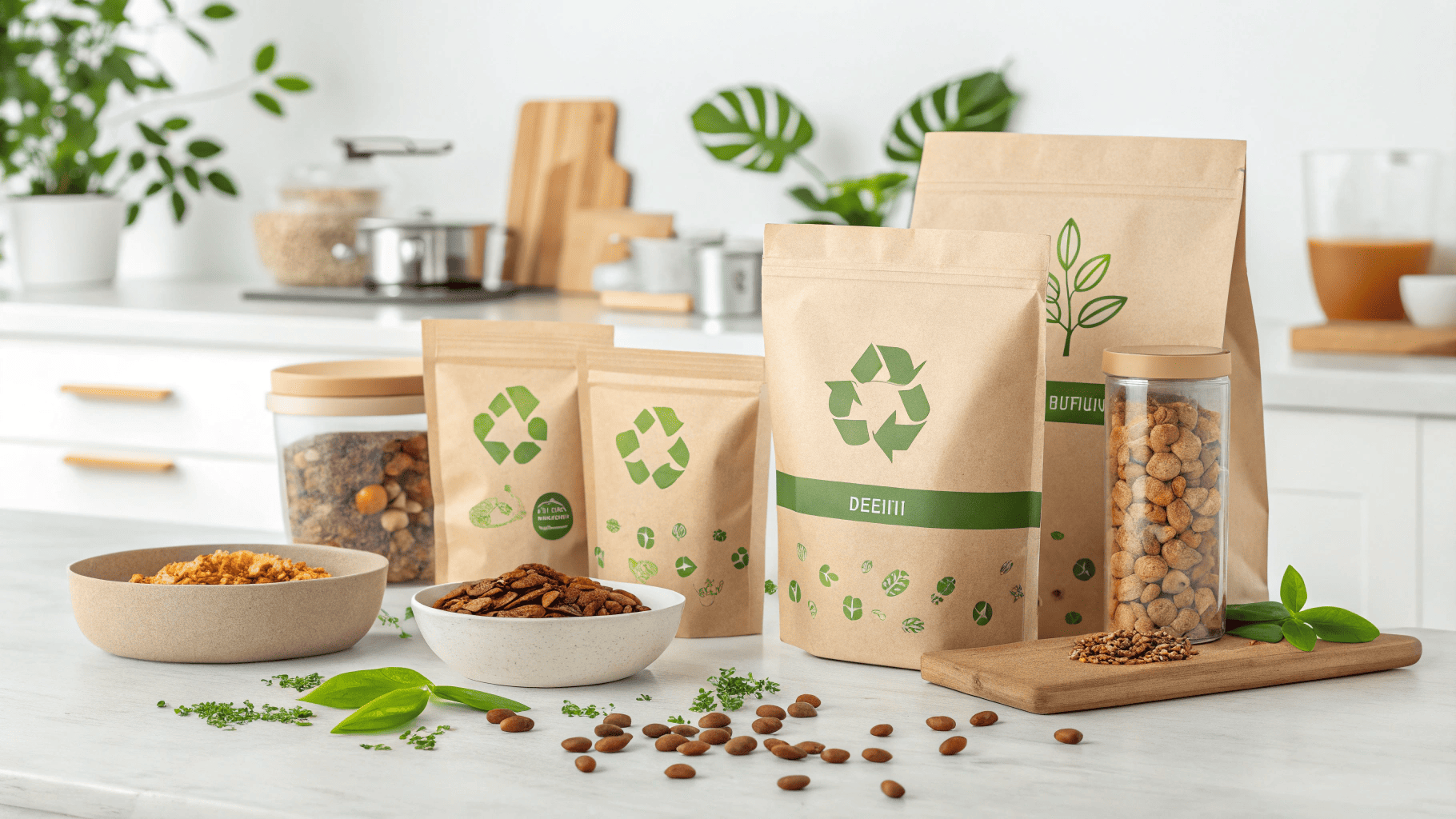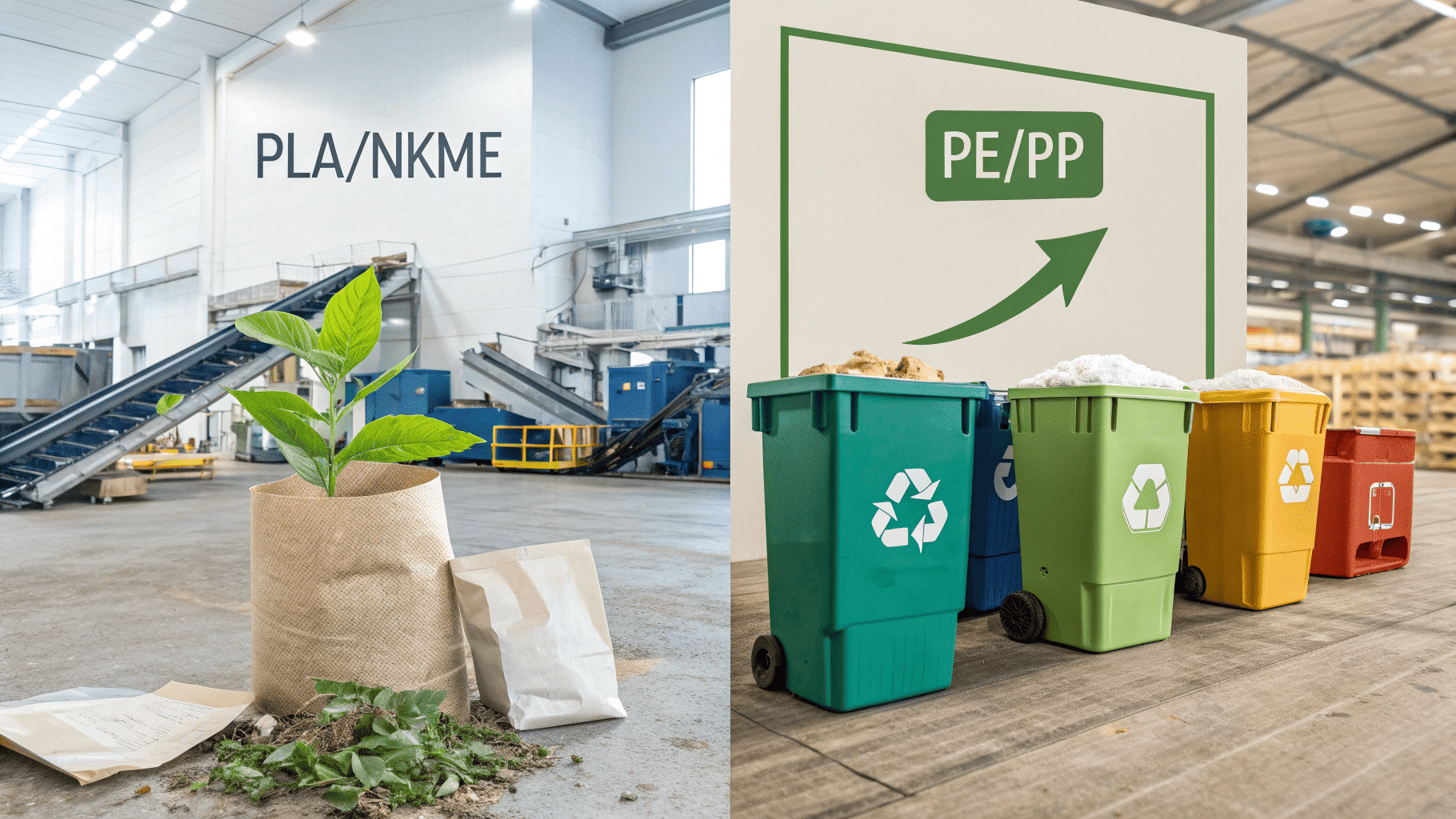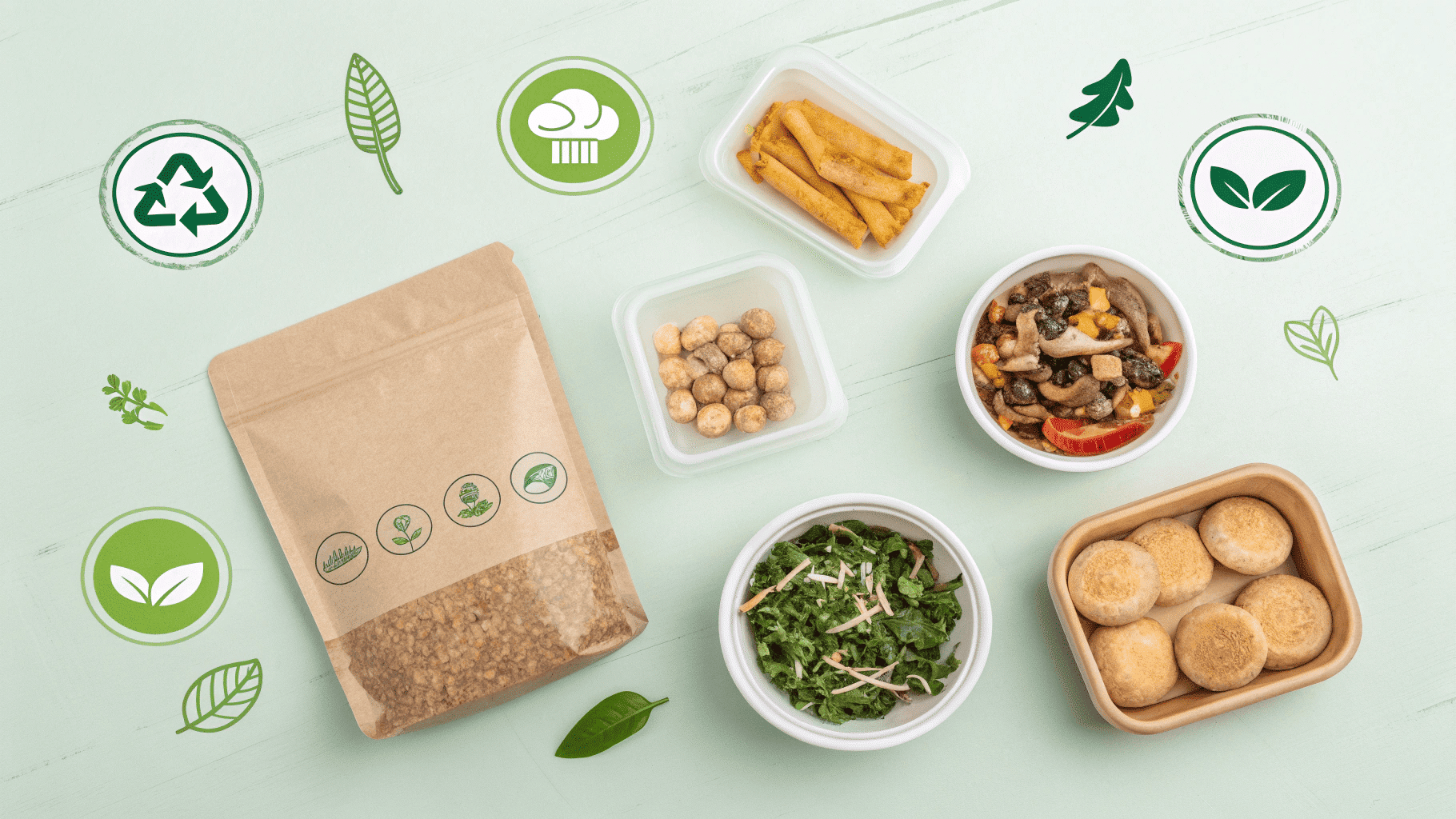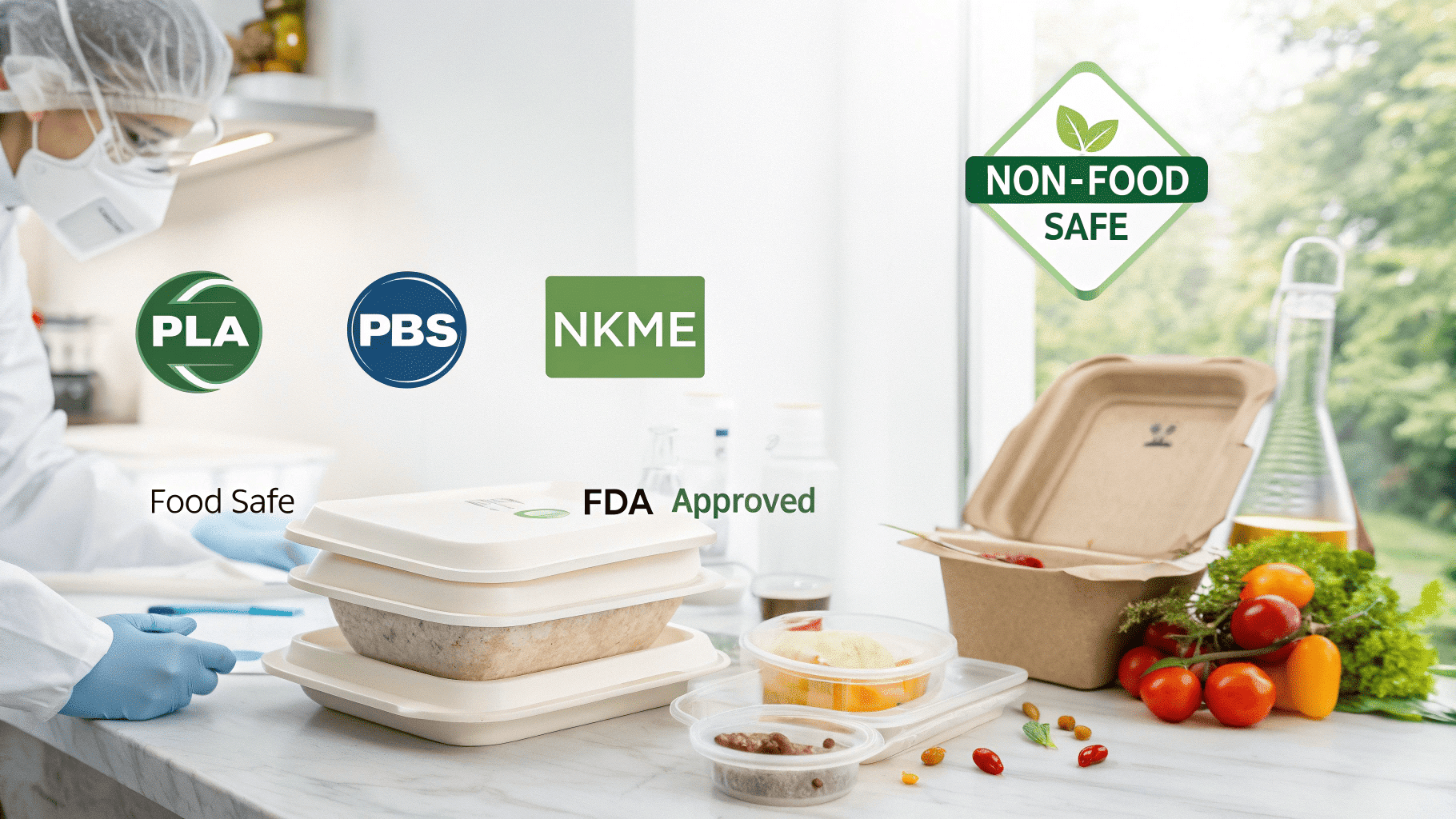Every year, 8 million tons of plastic packaging leak into oceans. As a sustainable packaging expert, I’ve seen how small material swaps can create massive environmental wins.
The best eco-friendly food packaging balances biodegradability, recyclability, and functionality. Top options include PLA bioplastics, PBS composites, and mono-material PE/PP structures. These materials reduce landfill waste while maintaining food safety standards.

But choosing sustainable packaging isn’t just about materials – it’s about matching solutions to your specific needs. Let’s break down the key options and their real-world applications.
What Is the Most Environmentally Friendly Food Packaging?
The "most eco-friendly" packaging doesn’t exist – it depends on your disposal infrastructure and product requirements.
Truly sustainable packaging either completely biodegrades (like PLA/NKME composites) or fully recycles (mono-material PE/PP). Industrial composting facilities favor PLA, while urban recycling systems work best with pure PE/PP structures.

Material Selection Guide
| Factor | Biodegradables | Recyclables |
|---|---|---|
| Decomposition | 3-6 months | N/A |
| Energy Use | Low | Moderate |
| Cost Premium | 15-30% | 5-15% |
| Shelf Life | 12-18 months | 18-24 months |
| Best For | Fresh foods | Dry goods |
Biodegradables like PLA work well for short-shelf-life products but require specific composting conditions. Recyclables offer better cost control for long-term storage. Always verify local waste management capabilities before choosing.
What Are the 7 Best Eco-Friendly Materials for Food Packaging?
Beyond the usual paper straws, these seven materials are revolutionizing food packaging:
- PLA (plant-based plastic alternative)
- PBS (heat-resistant bioplastic)
- NKME (compostable barrier film)
- Mono-PE (recyclable plastic)
- Mushroom packaging
- Bamboo fiber containers
- Edible seaweed wrappers

Material Performance Comparison
| Material | Degradation Time | Max Temp | Cost ($/kg) |
|---|---|---|---|
| PLA | 6-12 months | 60°C | 3.20 |
| PBS | 3-6 months | 100°C | 4.50 |
| NKME | 2-4 months | 80°C | 6.80 |
| Mono-PE | N/A (recyclable) | 120°C | 2.10 |
| Bamboo Fiber | 1-3 months | 100°C | 5.30 |
Mushroom and seaweed options work best for short-term packaging but lack heat resistance. For baked goods, PBS composites outperform PLA. Always pair materials with proper certifications (BPI, TUV Austria).
Is Biodegradable Packaging Truly Safe for Food?
"Biodegradable" doesn’t automatically mean food-safe – some plant-based materials contain hidden chemicals.
FDA-compliant biodegradable materials (PLA, PBS, NKME) are food-safe when using food-grade adhesives. Avoid materials with phthalates or bisphenol additives. Always request migration test reports.

Critical Safety Factors
-
Migration Limits
- Total migration <10 mg/dm² (EU 10/2011)
- Heavy metals <0.1 ppm
-
Certifications to Demand
- FDA 21 CFR
- EU 1935/2004
- ISO 22000
-
Red Flags
- Strong chemical odors
- Chalking surfaces
- Discoloration under heat
I’ve rejected 23% of "eco-friendly" material samples during client audits due to plasticizer leakage. Third-party lab testing is non-negotiable.
How Much Does Eco-Friendly Food Packaging Cost?
Sustainable packaging costs 5-40% more than conventional options – but new technologies are closing the gap.
Material costs range from $2.10/kg (recycled PE) to $8.50/kg (marine-degradable PHA). Bulk orders (10,000+ units) can reduce costs by 18-25%. Custom molds add $1,200-$5,000 upfront.
Cost Breakdown Examples
| Product | Conventional | Eco-Friendly | Price Difference |
|---|---|---|---|
| 500ml Takeaway Box | $0.18 | $0.27 | +50% |
| Coffee Pouch | $0.32 | $0.41 | +28% |
| Salad Bowl | $0.22 | $0.30 | +36% |
Tip: Combine materials strategically. Using PLA only for visible outer layers and PBS for seals can reduce costs by 12-15%.
Where Can I Buy Affordable Compostable Food Containers?
Finding reliable suppliers is harder than choosing materials – after 8 years in sustainable packaging, I’ve built trusted partnerships across three continents.
Top verified suppliers include:
- PackagingBest (Global) – My own company specializing in custom compostable pouches and containers
- Eco-Products (US/EU)
- Greenovation (Germany)
- BioPak (APAC)
Why Choose PackagingBest?
| Feature | Standard Suppliers | PackagingBest |
|---|---|---|
| Custom Shapes | Limited options | 20+ designs |
| Material Combinations | Pre-set formulas | Tailored mixes |
| Minimum Order | 5,000 units | 1,000 units |
| Lead Time | 6-8 weeks | 4-5 weeks |
| Certification Support | Basic documents | Full guidance |
We’ve shipped over 12 million compostable units since 2020, including:
- Stand-up pouches for organic snacks
- Flat-bottom bags for coffee beans
- Side-gusset bags for pet food
Last month, we helped a Canadian tea brand reduce packaging costs by 19% using our PLA/PBS composite bags. Our team provides free material selection consultations – crucial when balancing compostability and barrier requirements.
Sourcing Checklist
-
Certifications
- Demand BPI (ASTM D6400) and OK Compost HOME certificates
- Cross-check with certification body websites
-
Customization
- Request material samples in your actual product format
- Test printing adhesion with your logo design
-
Practical Testing
- Conduct real-world storage trials (we provide test protocols)
- Verify heat-sealing performance with your equipment
Pro Tip: Ask suppliers for client references in your industry. We freely connect potential clients with 3-5 existing customers using similar packaging solutions – actual user feedback beats marketing claims every time.
Are Paper-Based Food Boxes Truly Eco-Friendly?
Paper packaging creates 70% more CO2 than plastic during production – the truth isn’t black and white.
Paper boxes are only eco-friendly if:
- Using 100% recycled content
- Water-based coatings
- FSC-certified sources
Avoid wax-coated or plastic-lined versions.
Paper Packaging Scorecard
| Factor | Recycled Paper | Virgin Paper |
|---|---|---|
| Water Usage | 12,000 L/ton | 24,000 L/ton |
| Carbon Footprint | 1.8 kg CO2/kg | 3.4 kg CO2/kg |
| Recyclability | 5-7 cycles | 3-5 cycles |
| Food Safety | Limited | Higher Risk |
The sweet spot? 70-80% recycled content with PLA coating. I helped a bakery chain reduce packaging waste by 43% using this hybrid approach.
Conclusion
Sustainable food packaging requires material science and practical wisdom. Start with small trials of PLA or mono-PE solutions, then scale what works for your product and region.

